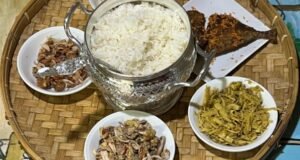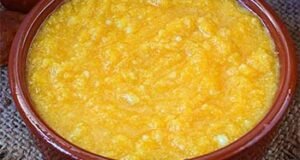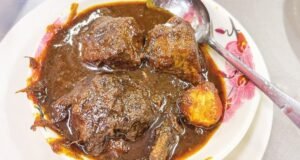 Despite undergoing a bypass surgery in 2012, 52-year-old Santacruz-based stockbroker,
Despite undergoing a bypass surgery in 2012, 52-year-old Santacruz-based stockbroker,
Nisarg Vora, is preparing for the upcoming 21-km marathon. He tells us how.Two and a
half years ago, while undergoing a routine health check-up, I discovered that my stress
test results were negative. Doctors recommended I see a cardiologist, almost
immediately, who suggested that I undergo an angiography. Turns out, with two major
blockages, my condition was such that a bypass was my only option. Within 10 days,
everything changed.From being able to climb four flights of stairs swiftly, I was reduced
to slowing down my pace. My sweet intake was cut down and I was advised to steer clear
of fried snacks. With a positive attitude and the support of my family, I was able to
bounce back soon enough. However, I returned to my regular routine with a few
constructive lifestyle changes.In April 2014, I learnt that a friend who is in his 40s, had
run the Satara Hill Marathon the previous year. This prompted me to give running a shot.
The friend suggested that I join a running group. Initially, I was reluctant because
although I had been a brisk walker, I rarely attempted running, or even jogging. Besides,
I was 52 years old.But, my coaches Suchita Varadkar and Dr Ajinath Kharat from the
Top Gear running group egged me on. They ensured that I always ran with them or other
seasoned runners.The first few weeks were exhausting. While fellow participants could
perform 10 Surya Namaskars, I would manage only three or four at a go.I would train for
three days. Mondays were reserved for exercises to loosen up, condition and strengthen
muscles, and ensure flexibility. We started with easy shoulder rotations and then scaled
up to core exercises.During the first few sessions, I was advised to go easy on myself. I
would walk at Carter Road promenade or the Bandstand Fort, back and forth, while the
rest of the group ran the distance. Gradually, I started running with a few halts.Three
weeks later, I attempted a 3.5 kilometre non-stop run across the bylanes of Bandra. I
would often find myself out of breath. I completed my first 7 kilometre run in July within
60 minutes.Yet, I would run only on flat surfaces and walk on gradients (Pali Hill, Mount
Mary’s Kane slope). Slowly, I started making small attempts at running on the
slopes.August onwards, we started training on Sundays, which are set aside for long runs.
In fact, Saturday night outs are currently a complete no-no for me. We start at 5.45 am
with warm up exercises, followed by running, and wind up each session with a few
stretching exercises, which ensure that there is no wear and tear of muscles. It prevents
injuries or pain, and improves athletic performance.In these months of preparation, I have
further cut down my sweet intake – I indulge in chocolates and ice-creams once in a
while – and have largely stuck to a healthy vegetarian diet comprising home-cooked
vegetables, dal, rice, chaas and roti. For breakfast, I eat oats. I have also started including
flaxseeds and walnuts in my diet.While on the run, I satiate myself with bananas, dates
and electrolyte powder packets, which spike my energy levels instantly. Fortunately, I do
not suffer from diabetes, hypertension (high blood pressure) or hypercholesterolemia
(high levels of cholesterol in the blood).I feel safer sprinting with a professional group,
and I’d strongly recommend first-time runners do the same. My fellow team members’
constant encouragement has kept me motivated.You can also try wearing a heart monitor
metre.Running isn’t easy. One is prone to several injuries. Therefore, Monday sessions
are considered sacrosanct. Over time, my endurance has gone up; I feel fresher, fitter and
definitely breathe lighter. I run at an average of 7 km /per hour. In fact, last week, I ran
20.30 kilometres – from Bandra’s MIG Club to Poonam Chambers in Worli – in two hours
and 50 minutes. I am still 0.70 kilometres shy of my target.I hope to reach the finish line
within three hours on Jan 18. Wish me luck.Precautions for heart patients- Patient should
undergo a thorough clinical examination by a cardiologist before or after surgery.- The
ejection fraction (the efficiency of the heart) should normally be 50-60 per cent. Those
with less than 45 per cent should avoid running the full marathon. This should be
confirmed by taking an echocardiogram.- ECG should be taken to see if there have been
attacks or ischaemia of the heart.- It is also recommended that patients undergo a
treadmill exercise test or a stress thallium test to ensure that the grafts of the bypasses are
patent.- Holter monitoring should be done to ensure that no rhythm disturbances occur in
a patient.- After having qualified as fit on the basis of clinical examination, ECG, Echo,
Holter monitoring and stress test, it is preferable that the patient undertake a supervised
rehabilitation programme on treadmill, bicycle ergometer to condition his heart to take
part in the marathon. Several of these patients are diabetics and an appropriate dose of
anti-diabetics should be prescribed to see that they do not become hypoglycemic while
running the marathon.- The clinical examination should also evaluate whether the
surgical incisions are healed and a chest X-ray should be taken to ensure that there is no
collection of fluids in the lungs.- Dr Dev Pahlajani, Cardiologist at the Breach Candy
Hospital-Internet
 Weekly Bangla Mirror | Bangla Mirror, Bangladeshi news in UK, bangla mirror news
Weekly Bangla Mirror | Bangla Mirror, Bangladeshi news in UK, bangla mirror news







